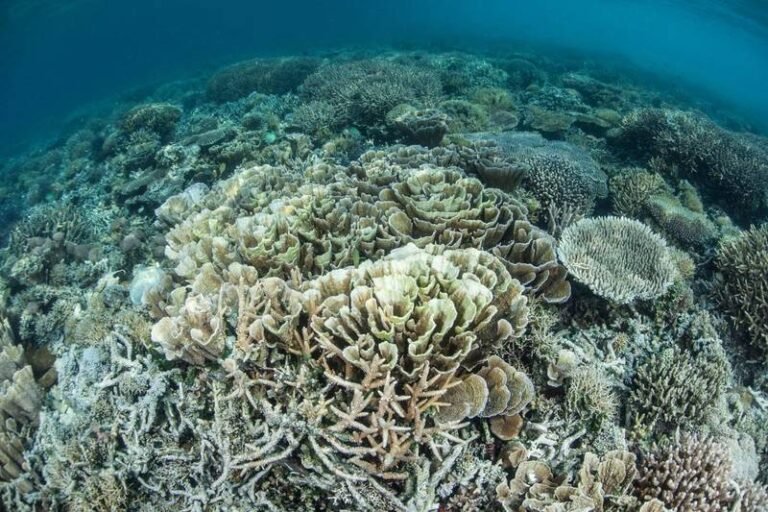The Devastating Impact of Mass Coral Bleaching on Global Reefs
More than four-fifths of the world’s coral reef areas have been affected by devastating mass bleaching spurred by record-high ocean temperatures, turning many once-colorful reefs a ghostly pale hue, scientific authorities said on Wednesday.
Bleaching is triggered by anomalies in water temperature that cause corals to expel the colorful algae living in their tissues. Without the algae’s help in delivering nutrients to the corals, the corals cannot survive.
The world’s fourth mass bleaching event, which scientists declared one year ago, has shown few signs of slowing down, according to the International Coral Reef Initiative and data from the U.S. National Oceanic and Atmospheric Administration which track reef health. Instead, it has grown to be the most widespread on record, with 84% of reef areas – from the Indian Ocean to the Atlantic to the Pacific – subjected to intense heat stress for a duration expected to cause bleaching as of March 2025.
Last year was the hottest on record and the first to reach over 1.5 degrees Celsius warmer than pre-industrial times, contributing to unprecedented ocean temperatures and triple the previous record number of marine heatwaves around the world.
“The magnitude and extent of the heat stress is shocking,” said Melanie McField, a marine scientist working in the Caribbean. “Some reefs that had thus far escaped major heat stress and we thought to be somewhat resilient, succumbed to partial mortalities in 2024.”
“Bleaching is always eerie – as if a silent snowfall has descended on the reef,” she added.
Previous events in 1998, 2010, and 2014-17 saw 21%, 37% and 68% of reefs subjected to bleaching-level heat stress respectively.
Marine biologists had warned early last year the world’s reefs were on the verge of a mass bleaching following months of record-breaking ocean heat fuelled by human-induced climate change and the El Nino climate pattern, which yields unusually warm ocean temperatures along the equator and in the Pacific.
In December 2024, a weak La Nina pattern, which typically brings cooler ocean temperatures, gave scientists hope that corals might recover, but it only lasted three months.
Instead, the bleaching has continued to spread, said NOAA Coral Reef Watch coordinator Derek Manzello. The Solomon Islands and Papua New Guinea were recently added to the list of 82 countries and territories registering bleaching-level heat stress in their waters.
It will take scientists years to understand the global extent of coral reef death, but they say they have already observed widespread mortality in parts of the Caribbean, Red Sea, and along Australia’s Great Barrier Reef.
(Reuters – Reporting by Gloria Dickie and Ali Withers; Editing by Alexandra Hudson)

